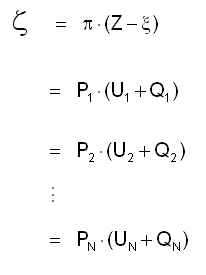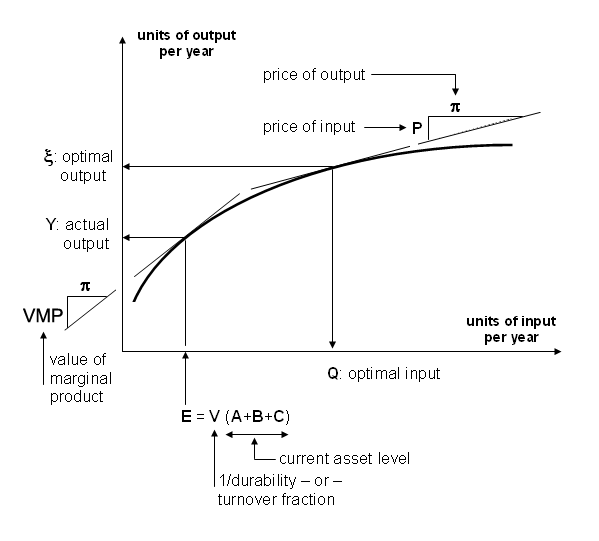Having set forth our physical circuit as the irreducible dynamic of a macroeconomic system, we have limited the economic theorist’s task to a determination of asset replenishment RIJK. Our discussion of equilibrium in a dynamic context established that the criterion of physical equilibrium is inadequate to control the dynamics of continuous asset readjustment. Since any system with the freedom to choose among equally attractive physical states will almost certainly resonate among these states, the minimal requisite for stability in the physical circuit would have RIJK’s tending toward a unique state such as general optimality. Our determination of RIJK must therefore exhibit critical references to the commodity prices PJK with which optimality is defined. For purposes in this article, prices will be taken as given, with price formation left to a separate article to follow.
Our discussion of the polynomial factoring problem epitomized the optimal functioning of an economic sector in a parameter z summarizing the interaction of the price environment [p,PJ] with a sector’s utility tradeoffs [Z,UJ]:
 Eqa. 2-7
Eqa. 2-7
Taking a sector's financial discriminant z as embodying its motive toward profit maximization, the optimal values [x,QJ] for a sector's output Y and its inputs EJ are disclosed in mathematically closed-form by reference to Equation 2-3.
 Eqa. 2-3
Eqa. 2-3
According to Equations 2-3, a particular sector IK’s zIK will interact with its utility tradeoffs UIJK and the prices PJK of commodities J in economy K to compute the optimal rate QIJK for IK to use J:

This equation’s zIK derives from the first of Equations 2-3:

Here we assert that a sector IK’s financial discriminant z references the current price p of its product, and its current state, as embodied in its current rate of output Y (which is here substituted for x in Equation 2-3). The validity of this assertion is based on its observed serviceability in directing SFEcon’s emulators.
With QIJK known, specification of asset replenishment rates RIJK can proceed from a motive to drive actual asset employments EIJK into alignment with optimal asset employments QIJK at a logistically meaningful and dynamically stable rate. The most direct alternative here (hence the one to be established by Model 0) is to set the replenishment rate RIJK at the optimal rate QIJK of asset expenditure. These logistics have EIJK driven toward QIJK most quickly for volatile assets characterized by high values of VJ; while assets that are durable, hence expensive, will proceed toward optimal levels at more conservative rates dictated by lower VJ’s.
We note that RIJK can only equal QIJK insofar as supplies are sufficient to meet all demands, and that some regime of allocation must govern asset replenishment when supplies are deficient. Model 0’s allocation regime will be discussed later in conjunction with global supply and demand.
The figure below summarizes our case for positive control of the economic state by a tendency toward economic optimality. One limb of a production function has been isolated to distinguish between actual rates of asset usage E and optimal rates Q in terms prices [p,PJ] and an input's value of marginal product VMP.

Forcing E into equality with Q drives VMP into identification with P irrespective of the final point at which the adjustment process settles; and the process is being driven by a criterion having no need of (nor place for) prior knowledge as to the final settlement point. This point of productive optimality where Y=x is stable because variations from it induce dis-economies — input price P varies from VMP — that are only resolved by optimality’s reinstatement at the same or another point. And it matters not whether the variation from optimality was introduced by logistical miscalculation with respect to this production function or by adjustments to prices dictated by changes in the shape of a production function somewhere else in the system.